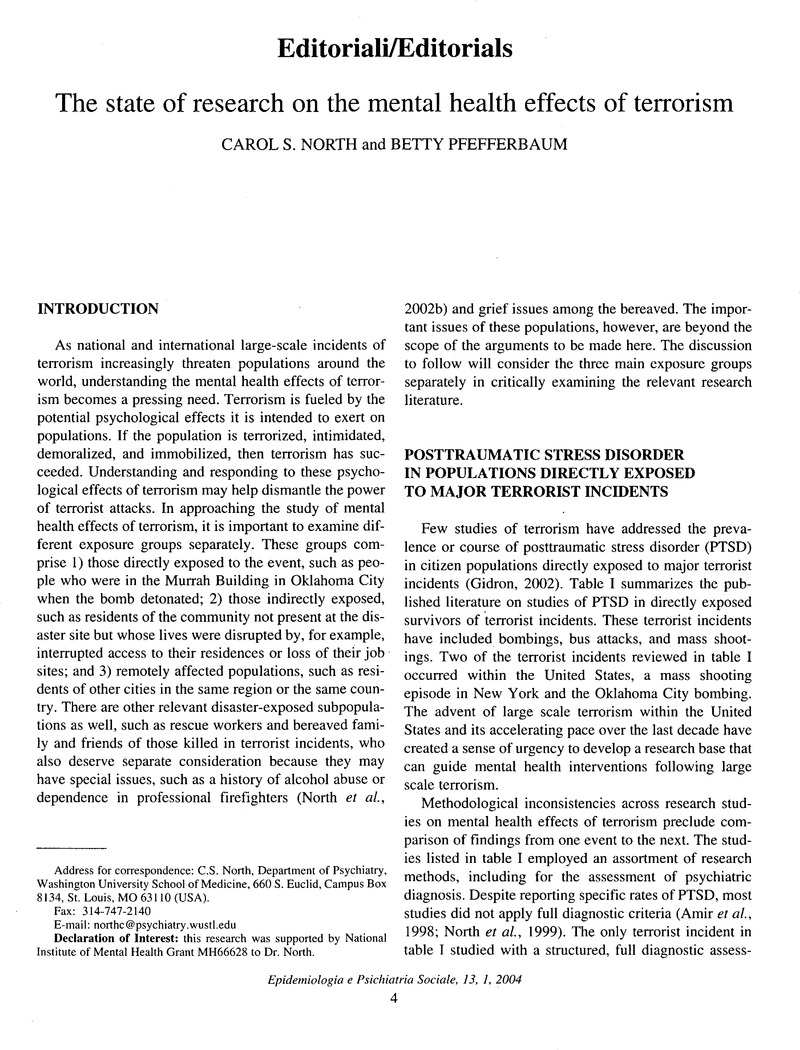Crossref Citations
This article has been cited by the following publications. This list is generated based on data provided by Crossref.
Reissman, Dori B
Klomp, Richard W
Kent, Adrian T
and
Pfefferbaum, Betty
2004.
Exploring Psychological Resilience in the Face Of Terrorism.
Psychiatric Annals,
Vol. 34,
Issue. 8,
p.
626.
Hamaoka, Derrick
Shigemura, Jun
Hall, Molly
and
Ursano, Robert
2004.
Mental health's role in combating terror.
Journal of Mental Health,
Vol. 13,
Issue. 6,
p.
531.
Pfefferbaum, Betty J.
Reissman, Dori B.
Pfefferbaum, Rose L.
Klomp, Richard W.
and
Gurwitch, Robin H.
2007.
Handbook of Injury and Violence Prevention.
p.
347.
North, Carol S.
Hong, Barry A.
Suris, Alina
and
Spitznagel, Edward L.
2008.
Distinguishing Distress and Psychopathology Among Survivors of The Oakland/Berkeley Firestorm.
Psychiatry: Interpersonal and Biological Processes,
Vol. 71,
Issue. 1,
p.
35.
Pfefferbaum, Betty
Tucker, Phebe
and
North, Carol S.
2009.
Mental Health and Disasters.
p.
508.
North, Carol S.
Pfefferbaum, Betty
Kawasaki, Aya
Lee, Sungkyu
and
Spitznagel, Edward L.
2011.
Psychosocial adjustment of directly exposed survivors 7 years after the Oklahoma City bombing.
Comprehensive Psychiatry,
Vol. 52,
Issue. 1,
p.
1.
Joo, Ji-Young
Huh, Seung
Yoon, Young-Ae
and
Chae, Jeong-Ho
2016.
Current Trends and Future Tasks of Cohort Study for Disaster Victims.
Journal of Korean Neuropsychiatric Association,
Vol. 55,
Issue. 3,
p.
168.
Philippe, Frederick L.
and
Houle, Iliane
2020.
Cognitive integration of personal or public events affects mental health: Examining memory networks in a case of natural flooding disaster.
Journal of Personality,
Vol. 88,
Issue. 5,
p.
861.
Mitchell, Jeffrey T.
2021.
Continuum of care for disasters and catastrophes.
International Review of Psychiatry,
Vol. 33,
Issue. 8,
p.
728.
Altmann, Thomas
and
Giersch, Jason
2022.
Sanctioned terror: economic sanctions and more effective terrorism.
International Politics,
Vol. 59,
Issue. 2,
p.
383.





